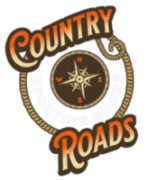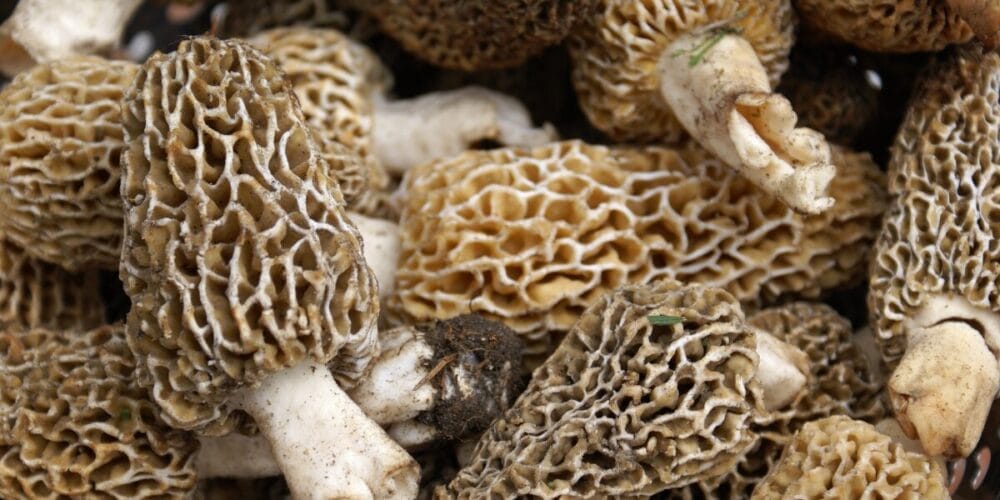Foraging in West Virginia: Edible Plants and Safety Guidelines

West Virginia is a forager’s paradise. Its diverse ecosystems, from lush forests to rolling hills and river valleys, offer a wide variety of edible plants throughout the year. Foraging can be an exciting way to connect with nature, supplement your diet with nutritious wild foods, and develop a deeper appreciation for the local environment. However, it’s crucial to approach foraging with knowledge, respect, and caution. This comprehensive guide will introduce you to some of the Mountain State’s common edible plants, provide essential safety guidelines, and offer tips for responsible foraging practices.
Common Edible Plants in West Virginia
Berries
Blackberries (Rubus spp.)
- Found in: Sunny areas, along trails, and in clearings
- Season: Late summer to early fall
- Identification: Look for thorny canes with compound leaves and clusters of black, juicy berries
- Uses: Eat fresh, make jams, pies, or add to smoothies
Blueberries (Vaccinium spp.)
- Found in: Acidic soils, often in higher elevations
- Season: Mid to late summer
- Identification: Low-growing shrubs with small, oval leaves and blue to black berries with a whitish bloom
- Uses: Eat fresh, bake in muffins or pies, or freeze for later use
Elderberries (Sambucus canadensis)
- Found in: Moist areas, along streams
- Season: Late summer to early fall
- Identification: Shrub or small tree with compound leaves and flat-topped clusters of small, dark purple berries
- Uses: Cook to make syrups, jams, or wines (never eat raw)
- Note: Only eat the ripe berries; other parts are toxic
Wild Strawberries (Fragaria virginiana)
- Found in: Meadows, woodland edges, and sunny slopes
- Season: Late spring to early summer
- Identification: Low-growing plants with trifoliate leaves and small, sweet red berries
- Uses: Eat fresh or add to desserts
Leafy Greens
Dandelion (Taraxacum officinale)
- Found in: Lawns, fields, and disturbed areas
- Edible parts: Leaves, flowers, and roots
- Season: Spring to fall
- Identification: Distinctive jagged leaves, hollow stems, and yellow flower heads
- Uses: Young leaves in salads, roasted roots as a coffee substitute, flowers for tea or wine
Chickweed (Stellaria media)
- Found in: Shaded, moist areas
- Edible parts: Leaves and stems
- Season: Spring and fall
- Identification: Small white flowers with five deeply cleft petals, oval leaves in opposite pairs
- Uses: Add Chickweed to salads or use as a mild green in sandwiches
Ramps (Allium tricoccum)
- Found in: Rich, moist woodland soils
- Edible parts: Leaves and bulbs
- Season: Early spring
- Identification: Broad, smooth leaves with a strong onion-like odor
- Uses: Use as a flavoring in soups, stews, or pesto
- Note: Harvest sustainably due to slow growth; consider only taking leaves and leaving bulbs
Stinging Nettle (Urtica dioica)
- Found in: Moist woodlands, along streams, and in disturbed areas
- Edible parts: Young leaves and stems (must be cooked)
- Season: Spring to early summer
- Identification: Tall plants with opposite, toothed leaves and tiny stinging hairs
- Uses: Cook as a nutritious green, make into tea, or use in soups
- Note: Wear gloves when harvesting to avoid stings
Nuts
Black Walnuts (Juglans nigra)
- Found in: Deciduous forests and along streams
- Season: Fall
- Identification: Large trees with compound leaves and round, green husked nuts
- Uses: Crack open for nutmeats, use in baking or as a topping
Hickory Nuts (Carya spp.)
- Found in: Hardwood forests
- Season: Fall
- Identification: Trees with compound leaves and nuts enclosed in thick, four-part husks
- Uses: Crack open for nutmeats, use in baking or as a snack
American Chestnuts (Castanea dentata)
- Found in: Forested areas (rare due to blight)
- Season: Fall
- Identification: Look for distinctive leaves and spiny burrs containing nuts
Uses: Roast and eat, or grind into flour - Note: True American chestnuts are rare; you’re more likely to find Chinese chestnuts
Mushrooms
Note: Mushroom foraging requires expert knowledge. Never consume wild mushrooms without proper identification by an expert.
Morels (Morchella spp.)
- Found in: Forests, often near dead elm trees or old apple orchards
- Season: Spring
- Identification: Distinctive honeycomb-like caps on hollow stems
- Uses: Sauté in butter, add to pasta dishes or risottos
Chicken of the Woods (Laetiporus sulphureus)
- Found in: On deciduous trees, particularly oaks
- Season: Summer to fall
- Identification: Bright orange, shelf-like fruiting bodies with a chicken-like texture
- Uses: Sauté as a meat substitute, add to stir-fries or soups
Chanterelles (Cantharellus spp.)
- Found in: Hardwood forests, often near oaks
- Season: Summer to fall
- Identification: Funnel-shaped, yellow to orange mushrooms with false gills
- Uses: Sauté gently, add to egg dishes or risottos
Safety Guidelines for Foraging
1. Proper Identification
- Use multiple reliable field guides for plant identification
- Consider joining local foraging groups or taking classes with experts
- Learn to identify toxic look-alikes for each edible species
- When in doubt, don’t eat it!
2. Legal and Ethical Considerations
- Obtain permission before foraging on private property
- Check regulations for foraging in state parks and public lands
- Practice sustainable harvesting to protect plant populations
- Follow the “Rule of Thirds”: Take no more than one-third of any plant population
3. Environmental Awareness
- Avoid foraging in polluted areas (e.g., roadsides, industrial sites, areas with known pesticide use)
- Be mindful of wildlife habitats and don’t overharvest
- Clean your shoes and gear to avoid spreading invasive species
- Leave no trace: Pack out all trash and avoid damaging surrounding vegetation
4. Personal Safety
- Wear appropriate clothing and footwear to protect against ticks and poison ivy
- Carry a first-aid kit, water, and communication device
- Inform someone of your foraging plans and expected return time
- Be aware of hunting seasons and wear bright colors when appropriate
5. Food Safety
- Clean and prepare foraged items properly
- Start with small amounts when trying a new plant to check for allergies or sensitivities
- Cook plants thoroughly unless you’re certain they’re safe to eat raw
- Store foraged foods properly to prevent spoilage
Seasonal Foraging Calendar for West Virginia
Spring
- Ramps
- Morel mushrooms
- Dandelion greens
- Wild strawberries
Summer
- Blackberries
- Blueberries
- Chanterelle mushrooms
- Lamb’s quarters
Fall
- Hickory nuts
- Black walnuts
- Chestnuts
- Chicken of the Woods mushrooms
Winter
- Pine needles (for tea)
- Black birch twigs (for tea)
- Rose hips
Foraging in West Virginia offers a unique opportunity to connect with nature, learn about local ecosystems, and enjoy fresh, nutritious wild foods. By following these safety guidelines, learning to identify edible plants, and practicing responsible harvesting, you can safely enjoy the bounty of the Mountain State. Remember, foraging is a skill that develops over time, so start slowly, learn from experienced foragers, and always prioritize safety. As you explore the forests, fields, and hillsides of West Virginia, you’ll gain a deeper appreciation for the rich biodiversity and natural resources that make this state a true forager’s paradise.





